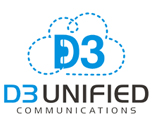This week, we present Chapter 10: Customer Demand vs. Capital Markets: How Fast Should You Transform? This is the eleventh post in a series dedicated to helping MSPs understand and adopt the recommendations of Consumption Economics–The New Rules of Tech. Chuck introduces the chapter by sharing how the content resonates with his 30+ years of industry insight.
A FEW WORDS FROM CHUCK
In his State of the Union Address in 1962, John F. Kennedy said, “The time to repair a roof is when the sun is shining.” Today, the weather in the technology sector is overcast with severe storms being forecasted for the near future. “The Cloud” is the storm that is going to hit every provider of technology services. This forecast is 100% accurate – it is not a matter of IF it will strike your company, but WHEN.
Over the last 10 weeks, this blog has focused on what needs to be done to survive and thrive in the Cloud-driven world, and how to do it. When the transformation actually begins will have a tremendous impact on a company’s success. Now is the time to take action while the light from the sun is still visible in the sky.
All technology companies will need to offer Cloud-based products and services – your customers will find what they are looking for with or without your company. There is no doubt that it will be much easier to transform your business model before the storm hits. Remember, Consumption Economics was written in 2011. Fast forward to 2018, many technology companies are already feeling the effects of the storm while the rest have been watching the storm’s approach.
Ignoring the predictions of Consumption Economics for your technology business is akin to disregarding the hurricane warnings issued by the National Weather Service. The Category 5 hurricane that Consumption Economics predicts will strike the technology services industry will cause catastrophic damage. It is time to fix the roof and batten down the hatches.
Your company needs to have Cloud-based options ready for your customer’s next technology refresh. Don’t try to fix your company’s roof during the hurricane – it greatly reduces the chances for your company’s survival. Waiting any longer to develop Cloud-based solutions means more customers for your competitors. As you will read below, it will take you months or years to make all the necessary changes to your business model.
This last chapter of Consumption Economics addresses the issue of when a company should transform and provides insight on the state of the ecosystem. It is worth reading twice.
AN EXCERPT FROM Consumption Economics—The New Rules of Tech
 Chapter 10: Customer Demand vs. Capital Markets: How Fast Should You Transform?
Chapter 10: Customer Demand vs. Capital Markets: How Fast Should You Transform?
Predicting the future is one thing, and we are pretty confident about what’s coming. Calling the timing of when the new model will become the standard in a given market sector or geography is much more difficult. The Pragmatists agree with the core trends and their implications. They see that their cost structures were built to manage expensive complexity and just can’t be supported at these lower price points. They see future growth coming less from the big customers they know and more from the little customers they don’t know. They see the power of the concepts but are wondering how fast they can and should move toward the Consumption Model.
It’s a delicate balance to manage—a high wire to walk without falling off. They have a product playbook business model today that they depend on for their current revenue and profits. On the one hand, they want to keep that going for as long as they can.
On the other hand, they see the vulnerabilities that could result from clinging to that model for too long. They are watching salesforce.com and Workday gain market share over SAP and Oracle. They have seen VMware seemingly come out of nowhere to capture a whole new market opportunity by being a stepping stone to the cloud. They wonder what Google will get into next. They see “consumer grade” devices being used where “enterprise class” was once the norm.
A senior exec at one of the world’s largest tech companies commented to us: “We talk about all this new behavior we want and, as we get close to the end of the quarter, we tell all the sales reps to go out and sell boxes.” That is the conundrum. There is often a balancing act between what our progressive customers want and what our short-term investors expect.
We have to start the journey no matter what Wall Street thinks in the short term. We have to educate them on what our progressive customers are telling us they want and what the future competition will look like, and we have to smartly model out the financial transition. Then we have to get our transformation started ASAP. Think of it as a 12-step program to wean our company, the financial analysts, and even our shareholders off of the old model. Otherwise, we will run it until it fails. We will take our company and crash it into the Margin Wall.
We believe that within the next two cycles of technology refresh, most customers will move away from the old model. If your tech refresh cycle is typically three years, then our rule of thumb would say you have six years to be completely transformed. If your cycle is two years, then you have four. Given the scope of the changes we have been talking about across your development, sales, marketing, and services organizations, four years is not very long. And making it even more urgent is that new customers in emerging markets around the world may just decide to skip on-premise IT altogether. They might just go straight to the cloud.
No one can give you an exact date. That’s why the first exercise in your Margin Wall homework is to calculate the length of runway you have in front of you. You have to study the tech refresh rate in your category. You have to look at how economically compelling the
“________ as a service” value proposition is in your sector, especially with your aggressive start-up competitors. You also have to consider your brand positioning. Do customers expect you to be a leader on new trends? Are your early-adopter customers already giving you fair warning that you need to get going?
The second major assessment tech executives need to make is how difficult it will be to design and install your new Consumption Model. Think of this as the height of the Margin Wall that you need to fly over. The two subsidiary questions are, of course, how much will the transformations cost, and how long will they take to plan and execute?
Your competition and your customers are moving to the other side. Apple is there. Salesforce.com is getting close. Amazon, Rackspace, NetSuite, Google, IBM, and HP are all pouring money into both their cloud infrastructure and their cloud business models. Dell is
reinventing itself around it. You have to get there. You can’t hope it will be on somebody else’s watch. Consumption Economics is coming to a market near you. You need a plan yesterday and action tomorrow.
The end result is this: How tech companies operate and how they make money will change more in the next 10 years than they have in the last 40 years. These changes will mean that lots of the common wisdoms, experiences, skills, and models that have gotten us this far may no longer apply. The changes are major, and the courage to make them will not be easy to come by. There will be a lot of entrenched forces telling you to hang on to the past. We think that your leading-edge customers, your next generation of internal leaders, and your long-term shareholders are of a different mindset.
Consumption Economics means that there are new rules of tech. Those companies that get them right will rule.
Because D3UC is dedicated to and entrenched with the MSP community, each week a new chapter of Consumption Economics will be discussed with emphasis focused on the challenges faced by VARs and MSPs who are transforming their companies’ business models to survive and thrive in the new, Cloud-driven world.
If you would like an overview of the book Consumption Economics, you can download a copy of the “abridged” version written by the TSIA from our website.
Week 2: How Good We Had It: The Money-Making Machine Known as High-Tech
Week 3: Shifting Clouds and Changing Rules
Week 4: Looking Over the Margin Wall
Week 5: Learning to Love Micro-Transactions
Week 6: The Data Piling Up in the Corner
Week 7: Consumption Development: The Art and Science of Intelligent Listening
Week 8: Consumption Marketing: Micro-Marketing and Micro-Buzz
Week 9: Consumption Sales: After a Great Run, the Classic Model Gets an Overhaul
Week 10: Consumption Services: Will They Someday Own “The Number”?
Week 11: How Fast Should You Transform?
Week 12: A Few Words From Chuck – The Epilogue
Published: July 2015
Reviewed: November 2016, March 2018

